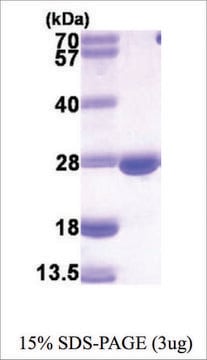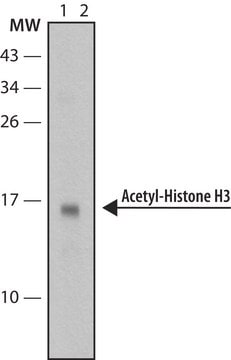EPI001
Histone Acetyltransferase (HAT) Activity Assay Kit
100 assays in 96 well plates
Synonym(s):
HAT Activity, Histone Acetyltransferase Activity
About This Item
Recommended Products
usage
100 assays in 96 well plates
shipped in
wet ice
storage temp.
−20°C
General description
Features and Benefits
- Sensitive and reliable assay
- Utilizes colorimetric methods
- Sample type: cell and tissue lysates
- Species reactivity: mammalian
- Suitable for individual tests or high throughput assays and kinetic studies
- Easy and simple procedure: combine nuclear extract or protein sample with reagents, incubate, and read absorbance
- Convenient 96-well microplate format
- Continuously measures HAT activity; suitable for kinetic studies
- No HDAC interference; crude nuclear extract can be used directly
Storage Class Code
12 - Non Combustible Liquids
Regulatory Listings
Regulatory Listings are mainly provided for chemical products. Only limited information can be provided here for non-chemical products. No entry means none of the components are listed. It is the user’s obligation to ensure the safe and legal use of the product.
PDSCL
Please refer to KIT Component information
PRTR
Please refer to KIT Component information
FSL
Please refer to KIT Component information
ISHL Indicated Name
Please refer to KIT Component information
ISHL Notified Names
Please refer to KIT Component information
Cartagena Act
Please refer to KIT Component information
JAN Code
キットコンポーネントの情報を参照してください
Choose from one of the most recent versions:
Certificates of Analysis (COA)
Don't see the Right Version?
If you require a particular version, you can look up a specific certificate by the Lot or Batch number.
Already Own This Product?
Find documentation for the products that you have recently purchased in the Document Library.
Customers Also Viewed
Our team of scientists has experience in all areas of research including Life Science, Material Science, Chemical Synthesis, Chromatography, Analytical and many others.
Contact Technical Service









